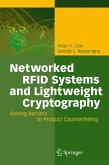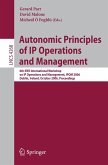Counterfeit trade is a highly complex phenomenon. It is a ruthless crime as well as a smart knowledge-transfer strategy - and it is everything in between. Companies need a thorough understanding of the strategies of illicit actors, the role of the consumer, and the associated implications in order to develop successful brand- and product-protection measures. Providing this know-how is the key-objective of the book at hand. The authors present an unbiased, in-depth analysis of the supply- and demand-side of the illicit market, outline state-of-the-art brand- and product-protection strategies, and introduce a set of novel tools to support market monitoring, reaction, and prevention efforts. Furthermore, challenges with established product security technologies are highlighted and the benefits and hurdles when using Radio Frequency Identification (RFID) as protection technology are discussed. A major benefit of the book is the strong focus on assisting practitioners to deal with the challenges; another is the high standard of research that backs up the findings presented.
Dieser Download kann aus rechtlichen Gründen nur mit Rechnungsadresse in A, B, BG, CY, CZ, D, DK, EW, E, FIN, F, GR, HR, H, IRL, I, LT, L, LR, M, NL, PL, P, R, S, SLO, SK ausgeliefert werden.









